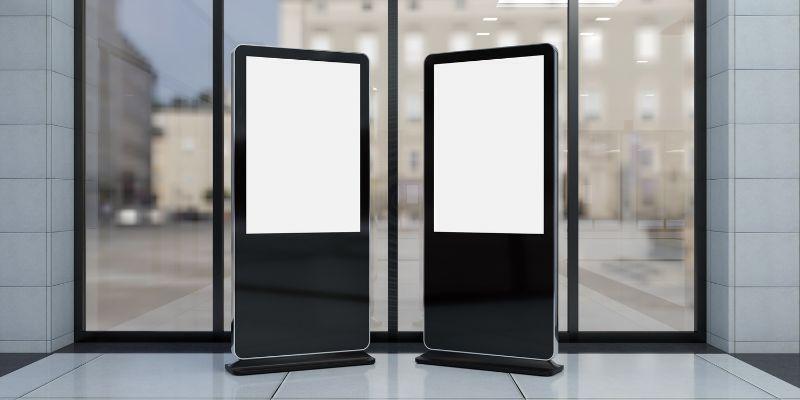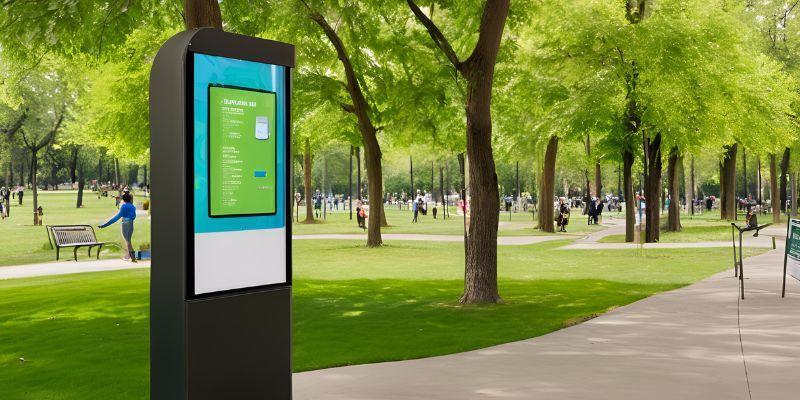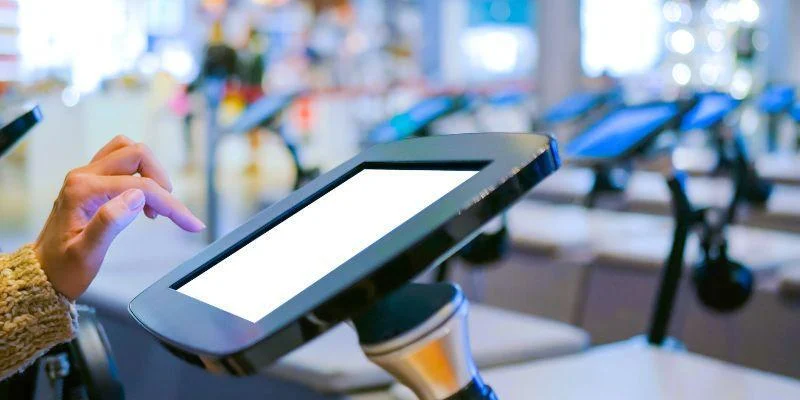Digital kiosks in museums and parks have become increasingly popular in recent years. These modern tools transform visitors’ engagement with exhibits and outdoor spaces, offering convenience, information, and interactive experiences.
Digital kiosks provide an easy and accessible way for visitors to explore content at their own pace. Whether navigating a museum’s vast collection or discovering more about the plants and wildlife in a park, these kiosks improve the overall experience.
They offer a dynamic way to present information, making learning more engaging and enjoyable.
In this write-up, we’ll explore the various benefits of digital kiosks, their use in museums and parks, and how they change how we interact with our surroundings.
Advantages of Digital Interactive Kiosks in Museums
 Digital interactive kiosks revolutionize how museums present their collections and engage with visitors. These kiosks offer a range of benefits that boost the overall museum experience, making it more interactive, personalized, and efficient.
Digital interactive kiosks revolutionize how museums present their collections and engage with visitors. These kiosks offer a range of benefits that boost the overall museum experience, making it more interactive, personalized, and efficient.
1. Interactive Exhibits
Digital kiosks can bring exhibits to life by incorporating interactive features allowing visitors to engage hands-only with content.
Instead of merely reading about an artifact or piece of art, visitors can use the kiosk to zoom in on details, watch related videos, or even participate in virtual simulations.
For instance, in a natural history museum, a kiosk might allow users to explore a 3D model of a dinosaur, learning about its anatomy and behavior through touch and interaction.
Examples of interactive kiosks in museums include touch-screen displays that allow visitors to explore historical timelines or kiosks in science museums that let users conduct virtual experiments.
These interactive elements make learning more engaging and memorable, helping visitors connect deeply with the exhibits.
2. Personalized Experiences
Digital kiosks can offer personalized content based on visitor preferences, tailoring the information and experiences to individual interests.
For example, when visitors interact with a kiosk, they might be prompted to select topics or themes that interest them most, such as ancient history, modern art, or scientific innovations.
Another use of kiosk monitors is when the kiosk curates a personalized tour, video, or media or provides content that matches these interests, ensuring that the visitor’s experience is relevant and engaging.
Personalization increases engagement and learning by making the museum experience more meaningful to each visitor. By focusing on what interests them, visitors are more likely to absorb information and enjoy their visit, leading to a more fulfilling and educational experience.
3. Multilingual Support
Museums often attract diverse visitors from different cultural and linguistic backgrounds. Multilingual support in digital kiosks is crucial for making exhibits accessible to everyone, regardless of their language.
By offering information in multiple languages, kiosks ensure all visitors can fully understand and appreciate the exhibits.
Outdoor interactive kiosks benefit from providing translations, audio guides, and written content in various languages, allowing non-native speakers to engage with the museum’s offerings.
For example, a museum kiosk might offer descriptions of exhibits in English, Spanish, Chinese, and other languages, ensuring that language is not a barrier to learning and enjoyment.
4. Reduced Staffing Costs
One significant benefit of museum kiosks is the potential to reduce the need for staffing in certain areas. Kiosks can handle tasks such as ticketing, providing directions, and answering frequently asked questions, which traditionally require staff members.
This automation allows museums to allocate their human resources more effectively, focusing on areas where personal interaction is most valuable.
The cost savings and efficiency benefits of using digital kiosks can be substantial. By reducing the need for staff in routine tasks, museums can lower their operational costs and improve overall efficiency.
Additionally, kiosks are available 24/7, ensuring visitors always have access to information and assistance, even outside regular staffing hours. This augments the visitor experience and allows museums to operate more smoothly and cost-effectively.
Benefits of Digital Interactive Kiosks at Public Parks
 Digital interactive kiosk designs are becoming an integral part of public parks. They offer a range of benefits that improve visitor experiences and park management. These kiosks provide helpful information, streamline services, and contribute to a more sustainable environment.
Digital interactive kiosk designs are becoming an integral part of public parks. They offer a range of benefits that improve visitor experiences and park management. These kiosks provide helpful information, streamline services, and contribute to a more sustainable environment.
1. Interactive Maps and Wayfinding
Interactive maps on digital kiosks help visitors navigate large parks and find points of interest easily. These kiosks can display detailed maps showing the location of attractions, restrooms, trails, and other amenities, making it easier for visitors to plan their routes and explore the park.
Visitors can zoom in and out using a kiosk monitor display, search for specific sites, or even get walking directions to their next destination.
The advantages of park information kiosks with interactive maps include improving visitor satisfaction by reducing the time spent looking for specific locations and ensuring that visitors make the most of their time in the park.
These kiosks provide a smooth and user-friendly way to explore the park, enhancing the visitor experience.
2. Event and Activity Information
Digital kiosks can also provide up-to-date information on park events and activities. Visitors can use the kiosks to find out about guided tours, concerts, workshops, and other events during their visit.
Kiosks keep visitors informed about what’s happening in the park, ensuring that they don’t miss out on exciting opportunities and can plan their day accordingly.
The benefits of kiosks in parks extend to making it easier for visitors to stay informed and engaged. Whether they spontaneously decide to join a yoga class or attend a wildlife talk, these kiosks help visitors take advantage of all the activities available in the park.
3. Ticketing and Reservations
Digital kiosks streamline the ticketing and reservation process, offering a convenient and efficient way to purchase tickets or reserve spaces for activities.
With self-service ticketing options, visitors can quickly buy entry tickets, book guided tours, or reserve spots for special events without waiting in long lines or interacting with staff.
The park kiosks’ use for ticketing is particularly beneficial in busy parks, where high visitor numbers can lead to congestion at ticket counters.
By automating these processes, kiosks reduce wait times, improve visitor flow, and allow park staff to focus on more complex tasks. This enhances visitor satisfaction and boosts the park’s operational efficiency.
4. Reduced Paper Waste
One environmental benefit of kiosks in parks is the significant reduction in paper waste. Instead of relying on printed maps, brochures, or tickets, visitors can access all the information they need electronically through digital kiosks.
This shift towards digital information distribution helps parks reduce their environmental footprint by minimizing the use of paper and other disposable materials.
The outdoor interactive kiosk benefits extend beyond just providing convenience—they also support sustainability efforts by reducing the amount of waste generated in parks.
By promoting a greener approach to information sharing, digital kiosks preserve natural spaces, ensuring that parks remain beautiful and eco-friendly for future generations.
Must-Have Characteristics of Digital Kiosk Software
 To maximize the benefits of digital kiosks in museums and parks, their software must include key features that develop usability, accessibility, and security.
To maximize the benefits of digital kiosks in museums and parks, their software must include key features that develop usability, accessibility, and security.
1. Content Management System (CMS)
A robust Content Management System (CMS) is essential for managing and updating content across multiple kiosks from a central platform.
The CMS should support multimedia content, including videos, images, and interactive elements, ensuring a rich and engaging kiosk monitor display experience for all visitors.
2. Multilingual Support
Multilingual support is crucial for catering to the diverse visitors at museums and parks. The software should flawlessly translate text, audio, and other content, allowing the kiosk to provide information in multiple languages.
This ensures that everyone can access and understand the museum interactives and other information provided.
3. Accessibility Features
Kiosk software must comply with ADA (Americans with Disabilities Act) standards and offer features like screen readers, closed captions, and high-contrast modes.
This ensures that the kiosk is accessible to all visitors, including those with disabilities, enhancing the museum kiosk benefits by making exhibits and information universally available.
4. Data Analytics and Reporting
Data analytics and reporting tools are vital for tracking visitor engagement, dwell times, and other metrics. These insights help optimize museum kiosks’ benefits, enabling better placement and content strategies to improve visitor interactions and overall experience.
5. Remote Management and Monitoring
Effective remote management and monitoring allow administrators to monitor kiosk performance, ensuring they are consistently functional. This capability includes smooth software updates and troubleshooting, which is crucial for maintaining real-time outdoor interactive kiosk benefits.
6. Offline Functionality
Offline functionality ensures that kiosks continue to operate and provide essential information even during network outages. This feature is critical in parks where connectivity may be unreliable, ensuring visitors always have access to park kiosks benefits regardless of network conditions.
7. Secure and Tamper-Resistant Design
A secure and tamper-resistant design is necessary to prevent unauthorized access or tampering with the kiosk’s content and settings. This includes robust security features to protect visitor data and privacy, maintaining the integrity and safety of the digital kiosks in museums and parks.
FAQs
How do digital kiosks enhance the visitor experience?
Digital kiosks enhance the visitor experience by providing interactive content, personalized information, and easy access to multimedia resources, making exploration more engaging and informative.
What is the purpose of an information kiosk in a public place?
An information kiosk in a public place offers visitors quick access to essential details, such as maps, event schedules, and services, improving convenience and overall visitor satisfaction.
How do digital kiosks help with wayfinding in prominent museums and parks?
Digital kiosks assist with wayfinding by offering interactive maps and directions, helping visitors easily navigate large spaces and find points of interest.
Can digital kiosks accommodate international visitors in different languages?
Digital kiosks can support multiple languages, providing content and instructions in various languages to cater to diverse international visitors.
Conclusion
Digital kiosks in museums and parks transform how visitors interact with their surroundings. By offering interactive maps, personalized content, and multilingual support, these kiosks boost the visitor experience, making information more accessible and engaging.
They also help reduce staffing costs, minimize environmental impact, and provide critical insights through data analytics.
As technology advances, the role of digital kiosks in museums and parks will only grow, offering even more innovative ways to explore, learn, and enjoy these spaces.
Whether navigating a museum exhibit or discovering a park’s hidden gems, digital kiosks are an essential tool for modern visitors.
BOOK A FREE DEMO





